Text
this is so mean but sometimes i see published writing and suddenly no longer feel insecure about my own writing ability. like well okay that got published so im guessing i dont have much to worry about
115K notes
·
View notes
Note
Hi, I'm aware this is probably something you can't help with, but I'm hoping perhaps your followers can. I am writing a story where one of the characters is trans and struggling with dysphoria. In the story, I want his partner to comfort him/support him. However, I'm not quite sure how to go about that. My original idea was to give him his partner's oversized (and favorite) hoodie to try and distract from it, but I'm not quite sure it's going to work out. If any of your followers could provide me some ideas/alternatives/advice/experiences, maybe the can comment/reblog and share? I don't know, I'm trans myself, but sometimes I doubt if my experience is enough to write these sorts of stories.
.
23 notes
·
View notes
Text
A theme is an argument a story is making about life. But it’s not really an “argument” if no one is disagreeing. For every argument, there should be a counterargument, an “anti-theme.”
Some say a story is only as good as its antagonist. Well, a theme is only as good as its “anti-theme.” When you give the opposition teeth, both the protagonist and theme will grow even stronger.
Here are some thematic arguments that I love 😊


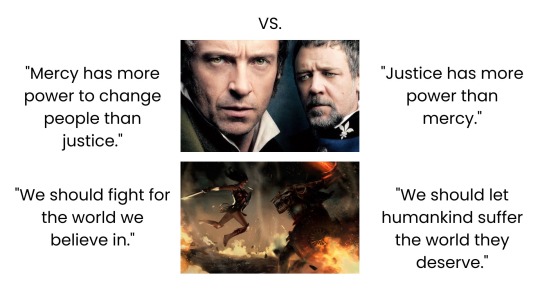
527 notes
·
View notes
Text
*through gritted teeth* the first draft will be shit but you are shoveling sand into the box not making castles kill the part of you that cringes I must not cringe cringe is the mind killer cringe is the li—
28 notes
·
View notes
Text
nobody warns you this but addiction happens without you noticing and one of the first things that it attacks is your ability to care. if you find yourself using recreational drugs every day, stop and take one day a week sober. if you struggle with this or if you don't see the point of the exercise, you are likely already addicted and you need help.
113K notes
·
View notes
Text
So... I found this and now it keeps coming to mind. You hear about "life-changing writing advice" all the time and usually its really not—but honestly this is it man.
I'm going to try it.

102K notes
·
View notes
Text
Fantasy Guide to Building A Culture
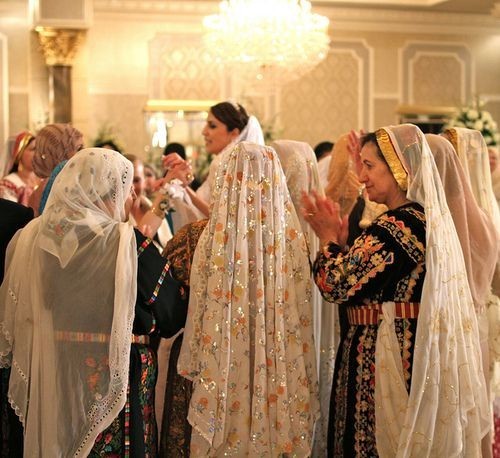
Culture is defined by a collection of morals, ethics, traditions, customs and behaviours shared by a group of people.
Hierarchy and Social Structures

Within every culture, there is a hierarchy. Hierarchies are an important part of any culture, usually do ingrained that one within the culture wouldn't even question it. Hierarchy can be established either by age, gender or wealth and could even determine roles within their society. Sometimes hierarchy can may be oppressive and rigid whilst other times, ranks can intermingle without trouble. You should consider how these different ranks interact with one another and whether there are any special gestures or acts of deference one must pay to those higher than them. For example, the Khasi people of Meghalaya (Northern India), are strictly matriarchal. Women run the households, inheritance runs through the female line, and the men of the culture typically defer to their mothers and wives. Here are a few questions to consider:
How is a leader determined within the culture as a whole and the family unit?
Is the culture matriarchal? Patriarchal? Or does gender even matter?
How would one recognise the different ranks?
How would one act around somebody higher ranking? How would somebody he expected to act around somebody lower ranking?
Can one move socially? If not, why? If so, how?
Traditions and Customs

Traditions are a staple in any culture. These can be gestures or living life a certain way or to the way a certain person should look. Traditions are a personal detail to culture, they are what make it important. Tradition can dictate how one should keep their home, run their family, take care of their appearance, act in public and even determine relationship. Tradition can also be a double edged sword. Traditions can also be restrictive and allow a culture to push away a former member if they do not adhere to them, eg Traditional expectations of chastity led to thousands of Irish women being imprisoned at the Magdelene Laundries. Customs could be anything from how one treats another, to how they greet someone.
How important is tradition?
What are some rituals your culture undertakes?
What are some traditional values in your world? Does it effect daily life?
Are there any traditions that determine one's status?
Values and Opinions
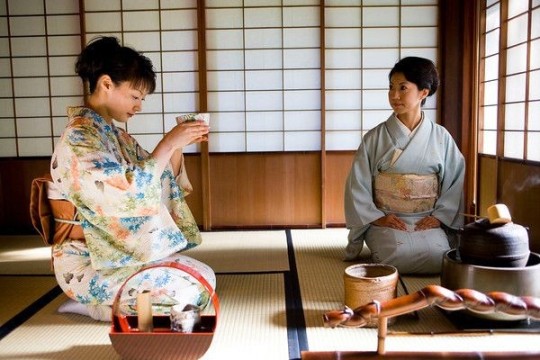
Values and Opinions are the bread and butter of any culture. This is the way your culture sees the world and how they approach different life hurdles. These may differ with other cultures and be considered odd to outsiders, what one culture may value another may not and what opinion another holds, one may not. There will be historical and traditional reasons to why these values and opinions are held. Cultures usually have a paragon to which they hold their members to, a list of characteristics that they expect one to if not adhere to then aspire to. The Yoruba people value honesty, hard work, courage and integrity. Here are some questions to consider?
How important are these ethics and core values? Could somebody be ostracised for not living up to them?
What are some morals that clash with other cultures?
What does your culture precieved to be right? Or wrong?
What are some opinions that are considered to be taboo in your culture? Why?
Dress Code
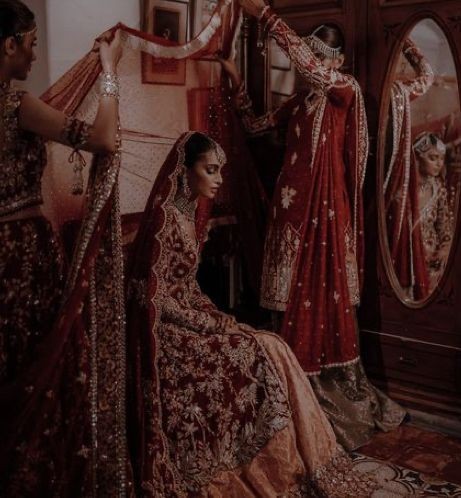
For many cultures, the way somebody dresses can be important. History and ethics can effect how one is meant to be dressed such as an expectation of chastity, can impose strict modesty. While other cultures, put more importance on details, the different sorts of clothes worn and when or what colour one might wear. The Palestinian people (من النهر إلى البحر ، قد يكونون أحرارا) denoted different family ties, marriage status and wealth by the embroidery and detailing on their thoub.
Are there traditional clothes for your world? Are they something somebody wears on a daily basis or just on occasion?
Are there any rules around what people can wear?
What would be considered formal dress? Casual dress?
What would happen if somebody wore the wrong clothes to an event?
Language

Language can also be ingrained as part of a Culture. It can be a specific way one speaks or a an entirely different language. For example, in the Southern States of America, one can engage in a sort of double talk, saying something that sounds sweet whilst delivering something pointed. Bless their heart. I have a post on creating your own language here.
Arts, Music and Craft

Many cultures are known for different styles of dance, their artwork and crafts. Art is a great part of culture, a way for people to express themselves and their culture in art form. Dance can be an integral part of culture, such as céilí dance in Ireland or the Polka in the Czech Republic. Handicrafts could also be important in culture, such as knitting in Scottish culture and Hebron glass in Palestine. Music is also close to culture, from traditional kinds of singing such as the White Voice in Ukraine and the playing of certain instruments such as the mvet.
Food and Diet

The way a culture prepares or intakes or treats certain foods are important to a culture. In some cultures, there is a diet yo adhere to, certain foods are completely banned. With Jewish culture, pork is prohibited along with fish such as sturgeon, along with shellfish and certain fowl. Meat must also be prepared in a certain way and animal byproducts such as dairy, must never be created or even eaten around this meat. This is known as kosher. The way one consumes food is also important to culture. In some cultures, only certain people may eat together. Some cultures place important on how food is eaten. In Nigerian culture, the oldest guests are served first usually the men before the women. In Japanese culture, one must say 'itadakimasu' (I recieve) before eating. Culture may also include fasting, periods of time one doesn't intake food for a specific reason.
What are some traditional dishes in your world?
What would be a basic diet for the common man?
What's considered a delicacy?
Is there a societal difference in diet? What are the factors that effect diet between classes?
Is there any influence from other cuisines? If not, why not? If so, to what extent?
What would a typical breakfast contain?
What meals are served during the day?
What's considered a comfort food or drink?
Are there any restrictions on who can eat what or when?
Are there any banned foods?
What stance does your world take on alcohol? Is it legal? Can anybody consume it?
Are there any dining customs? Are traditions?
Is there a difference in formal meals or casual meals? If so, what's involved?
Are there any gestures or actions unacceptable at the dinner table?
How are guests treated at meals? If they are given deference, how so?
11K notes
·
View notes
Text
How to cook in a medieval setting
Alright. As some of the people, who follow me for a longer while know... I do have opinions about cooking in historical settings. For everyone else a bit of backstory: When I was still LARPing, I would usually come to LARP as a camp cook, making somewhat historically accurate food and selling it for ingame coin. As such I know a bit about how to cook with a historical set up. And given I am getting so much into DnD and DnD stories right now, let me share a bit for those who might be interested (for example for stories and such).
🍲Cooking at Home
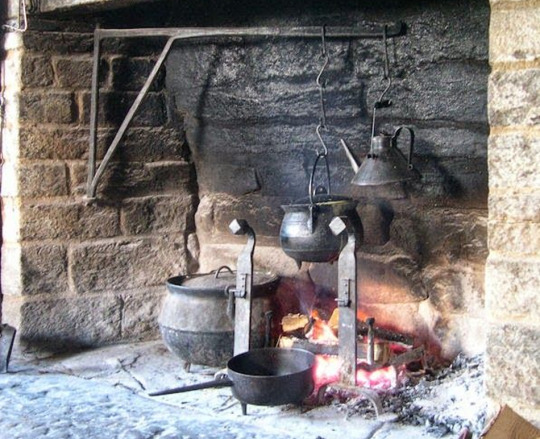
First things first: For the longest time in history most people did not have actual kitchens. Because actual kitchens were rather rare. Most people cooked their food over their one fireplace at home, which looked something like what you see above. There was something made of metal hanging over the fireplace. At times this was on hinges and movable, at times it was set in place. You could hang pots and kettles over it. When it came to pans, people either had a mount they would put over the fire or some kind of grid they could easily put into place there with some sourts of mounts (like the two metal thingies you can see above).
If you have a modern kitchen, you are obviously used to cook on several cooktops (for most people it is probably four of them), while in this historical you obviously only had one fire. Of course, as you can also see in the picture above, you could often put two smaller pots over the flames or put in a pan onto the fire additionally. But yes, the way we cook in modern times is very different.
Because of this a lot of people often ate stews and soups of sort. You could make those in just one pot - and often could eat from the same stew for days. In a lot of taverns the people had an "everything stew" going, which worked on the idea that everyone just brought their food leftovers, which were all put into one pot everyone would eat from.
Now, some alert readers might have also noticed something: What about bread and pastries? If you only have one fireplace and no oven, how did people make bread?
Well, there were usually three different methods for this. The most common one was communal ovens. Often people had one communal oven in a neighborhood. Especially in a village there might just be a communal oven everyone would just put their bread in to bake. (Though often this oven would only be fired up once or twice a week.)
The second version to deal with this some people used was a sort of what we today call a dutch oven. A pot made either of metal or clay with a lit you would put into the hot coals and then put bread or pastries into that, baking it like that.
There was also a version where people just baked bread in pans on the fire, rotating the bread during the baking process. At least some written accounts we have seem to imply. (Never tried this method, though. I have no idea how this might work. My camp bread was mostly done in dutch ovens or as stickbread.)
Keep in mind that the fireplace at home was very important for the people in historical times. Because it was their one source of warmth in the house.
🏕️ Cooking at Camp
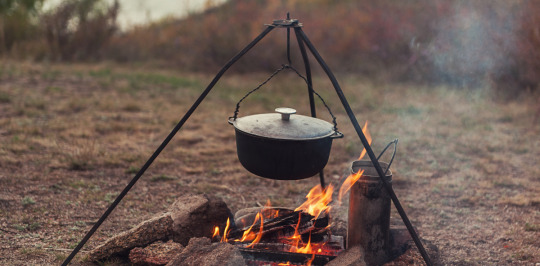
Technically speaking cooking at camp is not that different - with the exception of course that you have to drag all your supplies along. And while in Baldur's Gate 3 and most other videogames you can carry around several sets of full-plate armor and several pounds of ingredients so that dear Gale can whip something up... In real life as an adventurer running around you need to make decisions on what to take along.
If you have read Lord of the Rings, you might remember how many people have criticized Sam for actually dragging all his cooking supplies along and how sad he was for not being able to cook for most of the time, because they were very limited in taking ingredients along.
So, yes, if you are an adventurer who is camping out in the open, you will probably need to do a lot of hunting and gathering to eat during your travels. You can take food for a couple of days along, but not for a lot.
A special challenge is of course, that while you can cook food for several days when you are at homes, you do not want to drag along a prepared stew for several days. So usually you will cook in smaller batches.
A lot of people who were journeying would often just take along one or two pots along.
So, what would you eat as an adventurer travelling around while trying to save the world from some evil forces? Well, it would depend on the time of the year of course. You would probably hunt yourself some food. For example hares, birds or squirrels. Mostly small things you can eat within one or two days. You do not want to drag along half a dead deer. In the warm months you might also forrage for all sorts of greens. You also can cook with many sorts of roots. Of course you can also always look into berries and other fruits you might find.
Things you might bring with you might be salt and some spices. A good thing to bring along would be herbs for tea, too, because I can tell you from experience that water you might have gotten from a river does not always taste very well - and springs with fresh water are often not accessible.
Now, other than what you can access the basic ideas of camping fires and cooking with them has not changed in the last few thousand years. While modern people camping usually have a car nearby and hence will have access to a lot of ingredients. But the general ideas of how to build a fire and put a pot over it... has not really changed.
So, yeah.
Just keep in mind that for the most part in historical settings until fairly recently, there was not much terms of proper kitchens. People cooked over an open fire and hence had to get at times ingenius about it.
1K notes
·
View notes
Text
Low level/continuous pain tips for writing
Want to avoid the action movie effect and make your character's injuries have realistic lasting impacts? Have a sick character you're using as hurt/comfort fodder? Everyone has tips for how to write Dramatic Intense Agony, but the smaller human details of lasting or low-level discomfort are rarely written in. Here are a few pain mannerisms I like to use as reference:
General
Continuously gritted teeth (may cause headaches or additional jaw pain over time)
Irritability, increased sensitivity to lights, sounds, etc
Repetitive movements (fidgeting, unable to sit still, slight rocking or other habitual movement to self-soothe)
Soft groaning or whimpering, when pain increases or when others aren't around
Heavier breathing, panting, may be deeper or shallower than normal
Moving less quickly, resistant to unnecessary movement
Itching in the case of healing wounds
Subconsciously hunching around the pain (eg. slumped shoulders or bad posture for gut pain)
Using a hand to steady themself when walking past walls, counters, etc (also applies to illness)
Narration-wise: may not notice the pain was there until it's gone because they got so used to it, or may not realize how bad it was until it gets better
May stop mentioning it outright to other people unless they specifically ask or the pain increases
Limb pain
Subtly leaning on surfaces whenever possible to take weight off foot/leg pain
Rubbing sore spots while thinking or resting
Wincing and switching to using other limb frequently (new/forgettable pain) or developed habit of using non dominant limb for tasks (constant/long term pain)
Propping leg up when sitting to reduce inflammation
Holding arm closer to body/moving it less
Moving differently to avoid bending joints (eg. bending at the waist instead of the knees to pick something up)
Nausea/fever/non-pain discomfort
Many of the same things as above (groaning, leaning, differences in movement)
May avoid sudden movements or turning head for nausea
Urge to press up against cold surfaces for fever
Glazed eyes, fixed stare, may take longer to process words or get their attention
Shivering, shaking, loss of fine motor control
If you have any more details that you personally use to bring characters to life in these situations, I'd love to hear them! I'm always looking for ways to make my guys suffer more write people with more realism :)
9K notes
·
View notes
Note
Hi!
I have reached out to more people, but I'm still having problems with this, and I wanted to hear another opinion.
As a writer, do you have problems continuing a story once you hit a difficult scene?
Because I do, and honestly it's getting me frustrated at this point.
I have a good idea and a plot already done, but every time I hit a difficult scene I just get stuck, and can't write for weeks, sometimes months. I hardly even open the documents when it happens, and sometimes it comes right when I'm on a writing spree and being happy with my writing.
Do you have any advice on how to deal with this? How can I get past this issue and just keep writing more frequently?
I'd really like to hear it!
What do you do when you hit a snag?
When approaching this topic, the frustrating thing is that age-old advice has a lot of truth to it. Sometimes it is true that the best thing you can do when you're stuck is to stop struggling against the resistance and take a meaningful, intentional break to rest your mind and reset your thought process. Sometimes the key to getting started again is shaking up the routine and the altering the process until you find a new combination of habits that meet you where you are.
However, for a lot of us, the turmoil reaches deeper than that. A lot of people who do creative things are neurodivergent, so that has a place in the conversation when discussing what's preventing us from realizing our vision. Even if you don't identify with specific neurodivergence, there are a lot of tools and techniques that have been tried and tested for coping with immense, intrinsic difficulty with things like productivity, mindfulness, interoception, focus, and consistency. Just because these techniques are not specifically designated for you doesn't mean they won't be effective for you.
It is always a helpful exercise to take a step back and examine how you're feeling, both when you are writing and when you aren't, and try to identify any areas where you might be able to improve by changing things within your control.
When it comes to a specific scene holding you back from carrying on, I usually find that it's the result of a decision I made earlier in the plot that isn't serving the story as it continues to develop. I would take a chunk of time to take an analytical look at the scene, where it's come from, what is and isn't sparking in it (is the stagnation mostly due to the characters, events, environment, or lack of information, and is it a scene that is imperative to the reader's understanding?). A lot of the time, it's a scene that can be cut, or it's a scene that can be made redundant by infusing the necessary information of the scene into another place within the story.
If you've identified a scene as "a difficult scene", ask yourself why. If it's daunting because it's too long, then it can probably be cut way down and then added to later if while editing it seems a little thin. If it's challenging because things aren't falling into place and you aren't getting into a flow, then the set-up for the scene probably hasn't been developed effectively and you need to decide whether you're gonna go back in the draft to investigate or move on and return to it while editing.
If the information in the scene needs to be communicated at this specific point in the story, the problem might be the way you've chosen to present it. Pay attention to what your instincts are telling you, because pushing through a scene for the sake of getting past it will not produce a compelling scene to read. If you need to move past it, you have permission to do that. You can always come back and completely dig it up later.
Overall, I think it's very important to write with acceptance that the plot may not turn out the way you planned it. The process is much more effective and much more enjoyable if you aren't trudging along on a predestined path. If the characters and story develop outside of the lines, see where they go. You'll always have the opportunity to return to the outline and tailor later.
Best of luck,
x Kate
158 notes
·
View notes
Text
One of my personal nitpicks for historical fantasy is a lack of servants, staff, subordinates, and... idk... subjects? Like, their absence is not... a total dealbreaker for me, depending on the situations the characters are in and whether or not I can just assume that other people are there in the background... but so many of the protagonists in historical fantasy stuff are higher-ranking (very often royalty), and/or have busy jobs, and/or have enormous houses that would necessitate having at least part-time staff.
Like, girl, you should have a maid! WHERE is your chaperone?! WHO is driving this carriage?! Where are your footmen? Are you trying to imply that a WEALTHY DUCHESS is taking a CAB?! You know that you probably have tenants, right? Where is your steward?! Where is your lawyer? Your accountant?! (Like, yeah, you're not going to have your lawyer living in your house, but you HAVE one, right???)
Or, man, you're supposed to be a military commander and you don't even have a single secretary?! Where is your SQUIRE?! (In the spirit of historical fiction, I am jumping wildly across time periods with every sentence here.) Man, I know you aren't looking after your own boots. Where are your GUARDS?! Who set up this tent for you?! Who is looking after your horse?! Who is making and carrying the incredibly valuable maps people are recklessly stabbing daggers into?!
SOMEONE has to be scrubbing these floors and delivering the mail and cooking the meals, and they're probably all DIFFERENT people! My dentist has at least three different receptionists and we can't even get ONE for our court wizard here? A sorcerer's apprentice to take notes? Sherlock Holmes can get away with just having a housekeeper and taking taxis, sure, but your character is supposed to be a KING?! Why is he answering his own front door? He's going to get assassinated.
Like, yes, I understand that a lot of servants in certain places at certain times were supposed to make their labor invisible, but there have always been servants who still had to interact directly with the masters of the house?! Yeah, there are potentially really messy ethics here, class divisions are bullshit, but I don't think ignoring the reality that humans have ALWAYS been doing work for other humans (even if it's just having a collective cooking pot for the group and the cook not necessarily being subservient to anyone) is better than just including some servants and employees? Because a complete absence of them, especially where logically for the worldbuilding there MUST be servants, often makes me think that your main characters just don't care enough to notice the "lower class" people or know their names.
Also, even Frodo Baggins had a gardener and Samwise Gamgee might be the best damn character in the story?! Sam saved the world?! Servants are PEOPLE. Servants are often the funniest and most interesting characters, tbh, with the most to say about a society and its workings, and also the joke of some romantic scene being carefully orchestrated by a stage crew of servants frantically diving into bushes to stay out of sight never gets old to me. Team work makes the dream work!
I don't want to gatekeep historical fiction, especially not historical fantasy, because the worlds don't necessarily have to conform to our own and may have magic and characters are often in very unique circumstances, but... sometimes I pick up a story and it's like... "Author, please tell me that you know there is a difference between a butler and a valet?!"
11K notes
·
View notes
Text
power signalling
Kneeling.
Ordered to kneel as punishment or as a show of deference.
Shoved physically to the ground by hands on their shoulders, maybe a kick to the back of the knee.
Picking themself up off the ground but only getting as far as hands and knees.
Crawling because they haven't got the strength to stand anymore.
Dropping to their knees from exhaustion or despair.
Personal space.
Casually invading it.
Uninvited touch - from the deeply creepy to something as simple as a firm hand on the shoulder.
Standing too close - especially if taller or otherwise physically stronger.
Conversely, hurrying to get out of someone's way.
Eye contact.
Staring someone down. Who is the first to look away?
Averting eyes for one's social superiors. Trying to de-escalate by avoiding eye contact.
Too frightened or ashamed to look someone in the eye.
Insisting that someone maintain eye contact while you're talking to them. Insisting that someone never look you in the eye.
Singling someone out just by looking at them.
More generally, Attention.
The room falls quiet when they walk in.
Who cuts in, and who gets talked over. Ignoring those who are beneath your attention.
The excited attention given to the object of respect and idolization.
The careful, wary focus given to a potential threat.
Deliberately attending to something else to appear less threatening. Deliberately burying oneself in something else to avoid attracting unwanted attention.
Codified status behaviours.
Bowing to one's superiors. Bonus points if there are differentiated kinds of bowing for different status differentials.
Soldiers coming to attention when a superior officer comes.
Saluting. Who greets whom first?
Serving food in a particular order.
Standing up when a respected person enters the room.
Non-verbal threats.
Just resting a hand on a weapon, or perhaps even just near a weapon.
Cracking knuckles or rolling shoulders. Clenched fists. The little come-get-some-then life of the chin.
Stepping from a conversational stance into one that's balance for fight or flight.
Pointing a weapon at someone. Casually brushing aside a weapon.
Conversely, de-escalation and surrender.
Open hands, spread in front of them. Hands above head.
(Raised slowly, transitioning from the simple whoa-calm-down gesture to full on surrender as the situation gets tenser.)
Going still. Slow, careful movements being sure to keep hands where they can be seen. Laying down weapons.
Hands on head. Getting down on the floor. Deliberately making oneself vulnerable to prove non-hostile (or non-resisting) intent.
Alternately, deliberately showing "vulnerability" to demonstrate how little of a threat you consider the other person.
The slouch of villainy. Open posture, casual, relaxed in the face of apparent danger.
Casually putting weapons away or turning one's back, confident that they won't do anything.
Signs of fear.
Flinching. Trembling. Closed defensive posture. Tension. Backing away. Fidgeting. Lip-biting.
Arms hugged close to chest. Or refusing to lower defences. Checking for escape routes. Trying to insist that they don't come any closer.
Offer of or requests for help.
Extending a hand to help someone up off the ground. Reaching out a hand in silent plea.
Do they have to ask for help? Are they willing to accept it? Do they get a choice? Who has plenty and who has to rely on the other's goodwill?
Picking someone up off the ground. Carrying them. (Dropping them?)
Adjusting someone's clothes. Withholding aid.
credit:@just-horrible-things // @whetstonefires suggests:
A character can vastly expand their area of influence by laying a hand on a table, for example. If you're standing on opposite sides of a large table, and one of you puts your hand down, that can symbolically take you up into the other party's personal space in a much subtler and more deniable way than actually getting up in their face.
This can be used equally well to convey affection or threat.
3K notes
·
View notes
Text
Skip Google for Research
As Google has worked to overtake the internet, its search algorithm has not just gotten worse. It has been designed to prioritize advertisers and popular pages often times excluding pages and content that better matches your search terms
As a writer in need of information for my stories, I find this unacceptable. As a proponent of availability of information so the populace can actually educate itself, it is unforgivable.
Below is a concise list of useful research sites compiled by Edward Clark over on Facebook. I was familiar with some, but not all of these.
⁂
Google is so powerful that it “hides” other search systems from us. We just don’t know the existence of most of them. Meanwhile, there are still a huge number of excellent searchers in the world who specialize in books, science, other smart information. Keep a list of sites you never heard of.
www.refseek.com - Academic Resource Search. More than a billion sources: encyclopedia, monographies, magazines.
www.worldcat.org - a search for the contents of 20 thousand worldwide libraries. Find out where lies the nearest rare book you need.
https://link.springer.com - access to more than 10 million scientific documents: books, articles, research protocols.
www.bioline.org.br is a library of scientific bioscience journals published in developing countries.
http://repec.org - volunteers from 102 countries have collected almost 4 million publications on economics and related science.
www.science.gov is an American state search engine on 2200+ scientific sites. More than 200 million articles are indexed.
www.pdfdrive.com is the largest website for free download of books in PDF format. Claiming over 225 million names.
www.base-search.net is one of the most powerful researches on academic studies texts. More than 100 million scientific documents, 70% of them are free
301K notes
·
View notes
Text
For all my fellow name nerds out there, I am very pleased to present the second annual "Gloyd Roberson Memorial List of Actual Human Children Who Wrote Letters to Santa in 1920s/30s Oklahoma".
These aren’t all necessarily “weirder than Gloyd” but fall into three rough categories which I’ve dubbed: “that’s got a nice ring to it”, “if I used this in a novel it would be considered too unrealistic” and “you’ve got 5 seconds to name a character that lives in 1920s Oklahoma, GO!”:
Selvyn Atteberry
Dyer Banfield
Bert Baxter
Hilda Bender
Imogene Berry
Heloise Blakely
Burl Boyer
Clyda Pearl Boyington
Okal Brooks
Vada Jo Bricker
Deverett Brumley
Lee Roy Buck
Vivian May Burdue
Donnie Buster
Elmarie Button
Junior Buzzard
Melchor Caldex
Tycene Calhoun
Tiny Bell Callison
Dapalene Caywood
Edney Clopton
Buster Combs
Georgia Countryman
Vantruba Crockett
Alto Day
Buddie DeWayne
Violet Divine
Elwanda Downing
Cletys Durham
Thurlo Epps
Apple Fields
Floyd Fleetwood
Metherine Franklin
Ula Fay French
Wanda Jo Fronterhouse
Irline Fuller
Jack Gritzmaker
J. D. Grizzle
Billie Jean Gulley
Joline Hardcastle
Kaloolah Herrill
Thelias Hatfield
Elva Heavins
Coleman Hewlett
Helen Hillhouse
Virgil Holderby
Katymae Houston
Myree Huffstutlar
Estelline Hurrypack
Blondie Huhm
Lila Lou Jackson
Denver Jones
Vernell Lambert
Sonny Boy Lockart
Dinkey Long (autocorrect really wanted this to be Donkey Kong)
Bamma Lynn
Rep Madden
Standford Mann
Jack Mattingly
Goldia McGee
Madge Messinger
Mauzell Mullins
Jeffie Wayne Muskrat
Archibald Neighbors
Hazel Nickerson
Eulah Oakley
Lyle Oyler
Milburn Partain
Jackson Payne
Montana Phillips
Bobbie Dean Phoenix
Toots Putman
Madonna Mae Rickey
Cyprine Robertson
Juanelle Schneeberger
Billie Jean Sparks
Texanna Smith
Pansy Stetson
Patsy Ruth Stubblefield
Eldon Sweezy
Hoy Trotter
Pearl Vandorien
Leland Weems
Joe Bob West
Wayness Whitely
Buster Wyatt
John Ira Youngblood
Domby Zinn
1K notes
·
View notes
Text
How to Make a 3D Mockup of Your Book for Free
Hi friends! While I wait for the paperback proof of The Complete Guide to Self-Editing for Fiction Writers to arrive in the mail this week, I’ve been creating some 3D mockups of the book to use on my site. I tried out a ton of tools, both paid and free, and found two services I really like. I wanted to share them with you all to save you the hassle of doing your own research if you ever want to do this for one of your books. It’s REALLY EASY to do and both of these tools are completely free with no account required to download your images.
Option #1: Smartmockups
Smartmockups offers 3D mockups of all kinds (t-shirts, coffee mugs, business cards, etc.). I used their site to create and download this cool 3D mockup of my ebook on a tablet and phone:
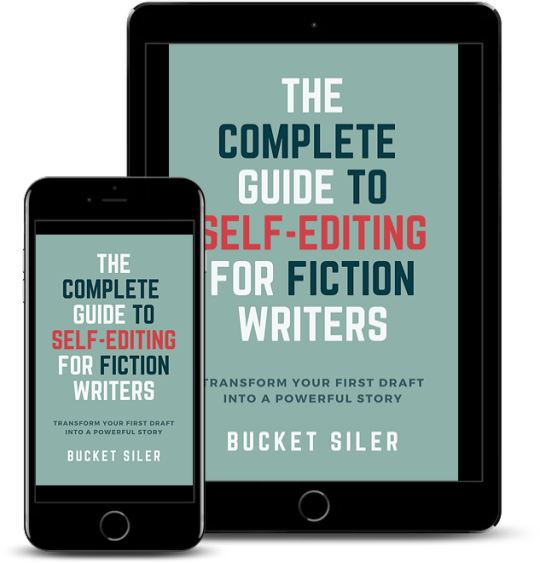
What I like about Smartmockups:
No account required to download your mockup.
Download as many free mockups as you want.
Internal cropping tool–if you look closely you can see that these covers don’t exactly match the device’s dimensions, however I was able to crop it within Smartmockups without creating a new image.
Transparent background
Multiple download size options
Keep in mind you will need a cover image that you created elsewhere to upload into their editor.
To find their free mockup templates, go to their site > Browse All Mockups. From there, choose your category on the left, then filter by “free.”
Option #2: DIY Book Covers
I also liked DIY Book Covers, and used their site to download these paperback and mixed ebook + 3D paperback mockups:
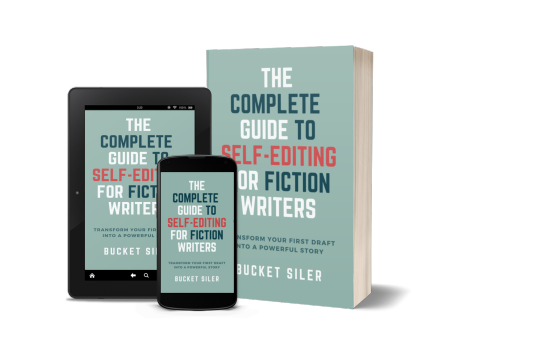
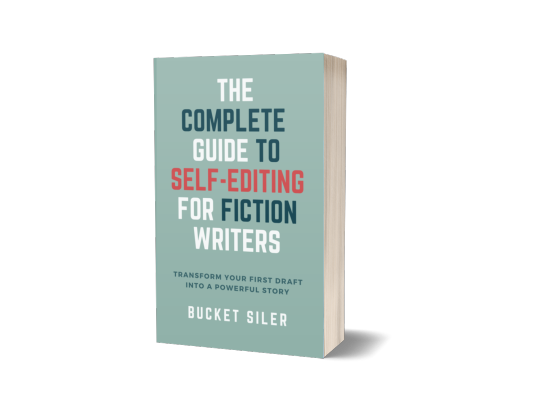
The quality is not as high in my opinion, but it still looks much better than comparable tools I found online, plus you can download as many as you want without making an account.
What I like about DIY Book Covers:
Easy-to-use tool
Transparent background (be sure to download in PNG)
Option for an image of a paperback next to an ereader, which is not available in Smartmockups
No account needed for free downloads
The site has a lot of other information and tools for authors, like a cover design creator, tutorials, and marketing advice
From the homepage, go to Book Design > 3D Mockups. Again, you will need your own cover image to upload. One thing to note is that I could not get the DIY Book Covers uploader to work in Firefox. I had to use Safari.
If you have tools you like to use to make 3D Mockups, please share them! These are the two that worked for me but I’m sure there are other good ones out there. I liked that they were free, high-quality, and I wasn’t required to make yet another online account in order to download them.
Hope this helps!
1K notes
·
View notes
Note
hi betts!
do you have any advice/thoughts on writing about hoarding? especially, about being the child of hoarders?
with thanks,
from a writer researching the topic for their fic :))
as i am a child of hoarders, i feel uniquely qualified to answer this.
if you were to describe a minimalist's apartment, you would have no choice but to mention what items are in it. those are objects that define the character who lives in that apartment. what things do they choose to keep? a house plant, maybe. a zero gravity chair. a couple candles. a macbook charging on a desk. maybe in your mind's eye you see big windows and pale beiges and ikea furniture.
people in hoarder houses still live in those houses, which means there have to be spaces for that living to happen. one stove burner is cleared off. maybe one kitchen table chair and a small placemat. there's a clear line from a recliner to the television. a path from the recliner to the bedroom, and maybe it's a narrow, difficult path, but a body can fit through it. maybe the bathroom is totally clean but if you open the back door, the garage is completely full. you can't even reach your hand in to feel on the wall for a light switch. and if you could, you couldn't see the light.
so in a minimalist's living space, you describe what's there. in a hoarder's living space, you describe what's not.
a minimalist holds an object and thinks, "i don't need this. i can get rid of it." a hoarder holds an object and thinks, "i don't need this. but i might." hoarding often comes from deep set financial insecurity, the fear that if you get rid of something, you will never be able to obtain it again. those little plastic things that keep the pizza box from crushing the pizza? they make good doll chairs. maybe one day you'll know a little kid who will need a doll chair, and when that happens, you'll be ready.
the child of a hoarder may not grow up with the same financial insecurity, but they do grow up with spatial insecurity, which often lends itself later in life to control issues. it's not as simple as hoarder children growing up to be minimalists (although they might), but hoarder children growing up to be hypervigilant toward objects, their worth, and the space they take up. they may also be hypervigilant of themselves and other peoples' perception of them, and develop an unhealthily high self-monitor. they may become compulsive buyers. they may develop obsessions with a certain type of item of extremely high quality. for example, a child of a hoarder may have a collection of louboutins.
no matter what direction they've taken though, they will have an unhealthy relationship with the ownership and placement of things. at least, they will until they reckon with it.
what follows is a personal anecdote so i'm putting it under a cut.
here's an example from my life:
when i was born, my parents lived in a pretty big house in a terrible part of town. that house was full but not overwhelming. when my sister was about to start school, they decided that they wanted to move to a nicer neighborhood, but all they could afford was a small apartment. and so they brought a house worth of stuff and shoved it in an apartment. my father was a compulsive buyer; my mother is a hoarder. so my dad would buy stuff and my mom wouldn't be able to get rid of it, and neither of them knew how to organize an entire house of stuff in a small apartment.
ten years later, we rented a house out in the country that could fit all our stuff (and oh boy is that a story). but from ages 3 to 13, i lived in a cramped, uncomfortable space.
fast forward twenty years. my sister and i are in our 30s. my sister wears designer clothes, takes spin classes, has a huge apartment and a nice boyfriend and two cats. she works a very high paying job and is also a local celebrity. her apartment is clean. but once when i was catsitting for her, i was looking for something and opened a closet and its contents nearly toppled out onto me. i opened another closet and the same thing happened.
i am the opposite in nearly every way. to list it all out would be very depressing, but let's just say if you were to ask me what my greatest indulgence is, like the fanciest thing i let myself buy, i would tell you orange juice. not even fancy orange juice. just regular generic brand OJ.
my living space is a mess, but it's organized. people are used to organized meaning clean. yes, my things are out and scattered around, but it's only because i haven't put them away. you could point to any object in my room and i could tell you where it belongs. i know where everything is and where everything goes, and cleaning is the process of putting things in the spaces i've already carved for them. my closet is meticulous.
my sister has grown up to become clean and bougie; i've grown up to become messy and frugal. my sister has no problem getting rid of things, but she likes to buy them; i struggle to get rid of things, but i rarely buy them. and i don't think either of us would have come to these extremes if we'd had a tidier living space growing up.
32 notes
·
View notes
Text
I am once again reading something set in a city that I have lived in written by someone who clearly has not done much/any research about that city.
I recommend doing the bare minimum of going on Google Maps and seeing if places are within easy walking distance of each other before you have people walking from one place to another.
Other things you might want to research are:
How do people generally travel?
What types of public transportation exist/what are they referred to as (e.g., subway vs metro)?
How can someone literally get from Point A to Point B?
If you're writing about a metropolitan area, who lives in the city versus the suburbs/exurbs?
Who lives in what parts of the city/town/area?
Is your character likely to rent versus own?
Are they likely to be able to afford to live alone?
What attractions are tourist attractions versus places where locals go?
What third places might exist?
1K notes
·
View notes